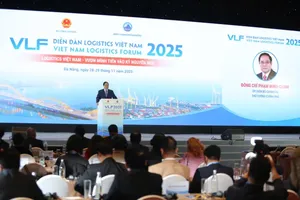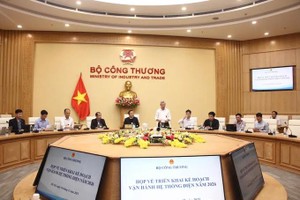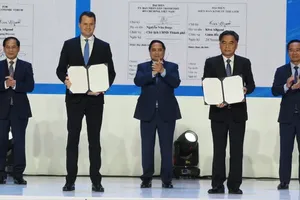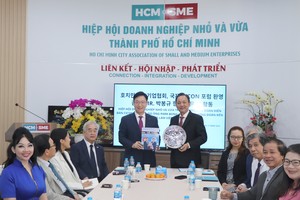The province of Tay Ninh, which shares a border of over 240 kilometers with neighboring Cambodia, is home to multiple international and auxiliary border gates which will bring the province significant advantages in trade and economic development with countries in the region.
In the upcoming time, once the newly merged Long An Province is completed, the resulting expansion of development space could usher in a new era of comprehensive socio-economic growth for the southern border region, serving as a buffer zone between the Mekong Delta and Southeast Vietnam. Within this context, the border economy holds strong prospects for robust development.
Expanding the trade corridor
With over 240 kilometers of border shared with Cambodia, along with three international border gates of Moc Bai, Xa Mat and Tan Nam, three main gates, and ten auxiliary border gates, Tay Ninh Province has long served as the southern gateway for Vietnam's trade with the Cambodian market. The province's annual import-export turnover through these border gates reaches several billion United States dollars, focusing on consumer goods, industrial raw materials, agricultural supplies, and agricultural products.
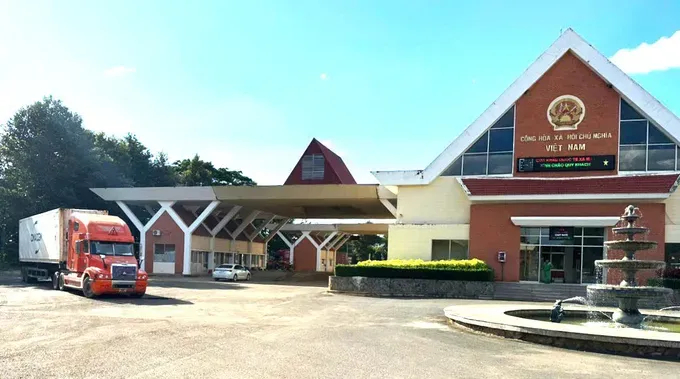
Accordingly, from the beginning of the 2021–2026 term up to now, Tay Ninh Province’s export value has exceeded US$14 billion, with an average annual growth rate of 14.2 percent, of which foreign-invested enterprises account for 94.9 percent. In 2024 only, the province recorded a total import-export turnover of US$16.74 billion, an increase of 12 percent compared to 2023. Of this, exports reached US$9.08 billion and imports gained US$7.66 billion.
Key export goods through Tay Ninh’s border gates include agricultural products, consumer goods, and production materials, while imports mainly consist of raw materials from wood, wood products and construction materials.
The strategic connection between Long An and Tay Ninh provinces is facilitating the formation of a closed-loop supply chain that spans production, warehousing, transportation, and cross-border export.
This integration will not only help optimize logistics costs but it shall also open up opportunities to boost formal exports to Cambodia while leveraging the preferential terms offered by both bilateral and multilateral Free Trade Agreements (FTAs) between Vietnam and countries in the region.
Notably, under the proposed provincial merger plan, Long An Province is expected to be merged with Tay Ninh Province, with the administrative center located in Tan An City, Long An. This move is gradually shaping a more defined development corridor, bridging one side anchored by Vietnam’s mega-metropolis Ho Chi Minh City, and the other side extending into a 373-kilometer-long border economic corridor, including 133 kilometers through Long An Province.
Expectations of breakthrough in border trade
According to Resolution No. 05-NQ/TU dated July 11, 2022, issued by the Tay Ninh Provincial Party Committee on the development of border trade through 2025, with an orientation toward 2030, the development of border trade aims to promote the province’s socio-economic growth while also making an important contribution to the broader development of the Southern Key Economic Region.
The resolution clearly stated that border trade development must become a driving force and a key factor in Tay Ninh’s socio-economic advancement. The province is striving to become a central hub for import-export goods trans-shipment from the Southern Key Economic Region to markets in Cambodia, Laos, Thailand, and ASEAN. Seizing the opportunity to expand the cross-border economic space, Tay Ninh Province is urgently investing in the expansion of warehousing systems, enhancing transportation capacity, and upgrading transport infrastructure connectivity to facilitate trade flow and attract more businesses.
In particular, in the coming years, Tay Ninh’s border economy is expected to show clearer signs of growth, thanks to the gradual implementation of strategic transportation infrastructure projects. Most notably, the Ho Chi Minh City – Moc Bai Expressway with its length of approximately 50 kilometers will connect Ho Chi Minh City with Tay Ninh Province. The project has a total investment of over VND19,617 billion (US$752 million) which is expected to break ground by the end of 2025, and be completed during 2026–2027.
This expressway will shorten travel time for goods transport from Ho Chi Minh City to the Moc Bai border gate to under one hour, compared to the current two to three hours. The project will not only bring significant trade benefits but it shall also serve as an investment attraction to industrial zones, border economic zones, and logistics hubs in Trang Bang, Go Dau, and Ben Cau—areas being positioned as new growth drivers for Tay Ninh Province.
At the conference announcing the master plan for Tay Ninh Province for the 2021–2030 period, with a vision to 2050 which was held on May 5, 2024, Vietnamese Prime Minister Pham Minh Chinh emphasized that Tay Ninh Province held significant potential and advantages, particularly in developing its border economy that was especially true in the current context of rapidly growing trade with neighboring Cambodia.
As a key gateway connecting directly and indirectly with several Southeast Asian countries, Tay Ninh Province possesses all three essential factors for rapid and sustainable development, comprising favorable timing, strategic location, and social consensus.

